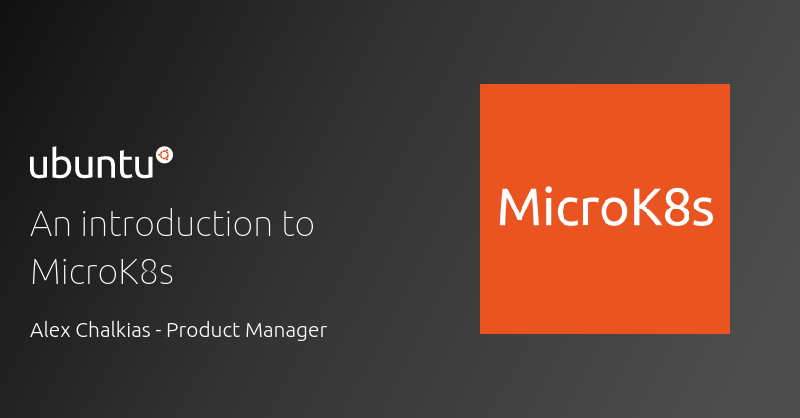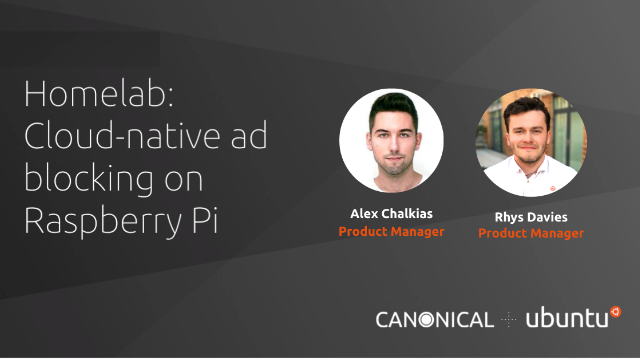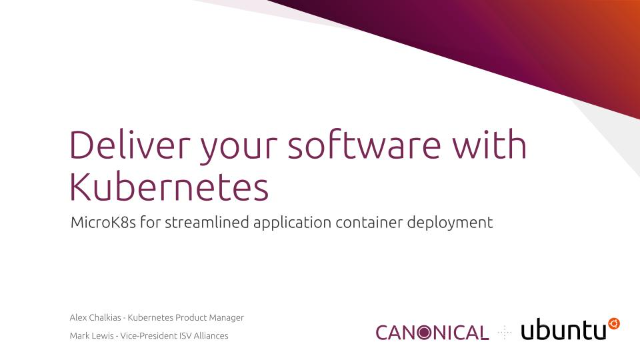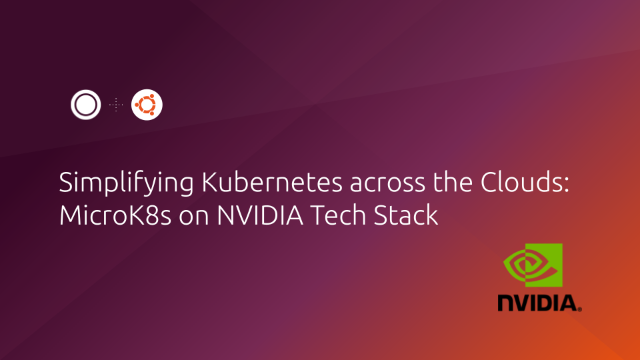This super short video gives an overview of MicroK8s: A lightweight, zero-ops, pure upstream Kubernetes which is at home on your laptop, in CI workflows, on a cloud or even embedded in your IoT Edge production environment.
Understand MicroK8s: Resources
Explore a collection of useful resources that will help you understand and evaluate MicroK8s when building your Kubernetes cluster.
Videos and webinars
This webinar gives a more detailed overview of MicroK8s. Learn about its main features, addons, use cases, and supported platforms. Whether you are a developer experimenting with the latest Kubernetes features or a business looking to deploy Kubernetes at the edge at scale, you will enjoy the comprehensive demo of building a MicroK8s cluster.
Discover how to build your own home cloud in this step-by-step video tutorial which combines the power of technologies such as LXD, MicroK8s, Charmed Operators, and Raspberry Pis.
This webinar introduces MicroK8s on Ubuntu Core: a locked-down, embedded Kubernetes deployment for lean and secure IoT edge appliances.
We go from a high-level overview down to step-by-step deployment on Intel NUC and Raspberry Pi hardware, and answer the most relevant questions in the Q&A session.
Running Windows is no longer a barrier to a rich and rewarding Kubernetes experience.
In this video, Canonical Product Managers Alex Chalkias and Sohini Roy are joined by WSL Corsair and Microsoft MVP, Nuno do Carmo, to discuss the latest features of WSL 2. They demo the installation of MicroK8s within the WSL 2 environment, the setup of a multi-node Kubernetes cluster and monitoring of the cluster through the Kubernetes dashboard.
Application vendors are often challenged by the complexity of Kubernetes.
Using MicroK8s and Ubuntu as the building blocks for cloud-native solutions removes infrastructure dependencies, ensuring software will run anywhere in a predictable manner.
This session gives a high-level overview of the benefits of embedded Kubernetes for ISVs and the MicroK8s container delivery methodology.
Kubernetes is an enabler for Data scientists to do AI/MLOps as it combines open source components to easily create workflows.
In this webinar, we highlight the details of MicroK8s' simplicity and robustness and demonstrate the different usage scenarios, running it on NVIDIA DGX, EGX, DPU and Jetson hardware using real applications from the NVIDIA ecosystem.
The cloud-native way of building software allows for consistency across developer environments and massive scalability of application deployments. Both these attributes are useful at the edge, but create new challenges related to security and resilience.
This webinar demonstrates how Canonical's modular technology stack addresses these challenges, using well-known cloud products such as MicroK8s and LXD.
Thanks to its self-healing high availability abilities, MicroK8s allows developers to build robust edge clusters. In this hands-on session, we manage Kubernetes edge nodes on a Raspberry Pi cluster using Portainer and demonstrate the zero-downtime capabilities of MicroK8s.
Mission-critical applications require resilient Kubernetes that can lose any node and still provide reliable services.
This webinar presents the case for running MicroK8s on IBM Z/Linux ONE/s390x systems: combining a robust, low-touch Kubernetes with the most reliable hardware platform available.
Publications
This 451 Research whitepaper focuses on the key factors that drive the evolution of IoT edge and the requirements around which Kubernetes need to optimise to become the standard edge platform.
MicroK8s, being a low-touch, low-footprint Kubernetes distribution, already addresses many of the key essentials!
Canonical is a proud member of the CNCF and MicroK8s is a very popular Kubernetes distribution for developers and enterprises alike.
In this industry report, we wanted to leverage our user base to share important data around the usage and operations of Kubernetes and cloud-native technologies. We also asked industry experts to provide their insights – this makes for a fascinating read.
From our blog

Alex Chalkias, Kubernetes Product Manager, walks us through the details of CI/CD pipelines.
In this introductory blog, we learn about the basics of continuous integration and continuous delivery, what are the benefits of Kubernetes CI/CD and how to combine MicroK8s with Gitlab to build a full DevOps environment.

What makes MicroK8s a lightweight Kubernetes distribution is its efficient packaging of all upstream Kubernetes services in a single artefact, called a snap.
In this blog post, we shed light on some memory footprint optimisations which make MicroK8s even better for Kubernetes deployments on small form factor devices such as the Raspberry Pi or the NVIDIA Jetson.
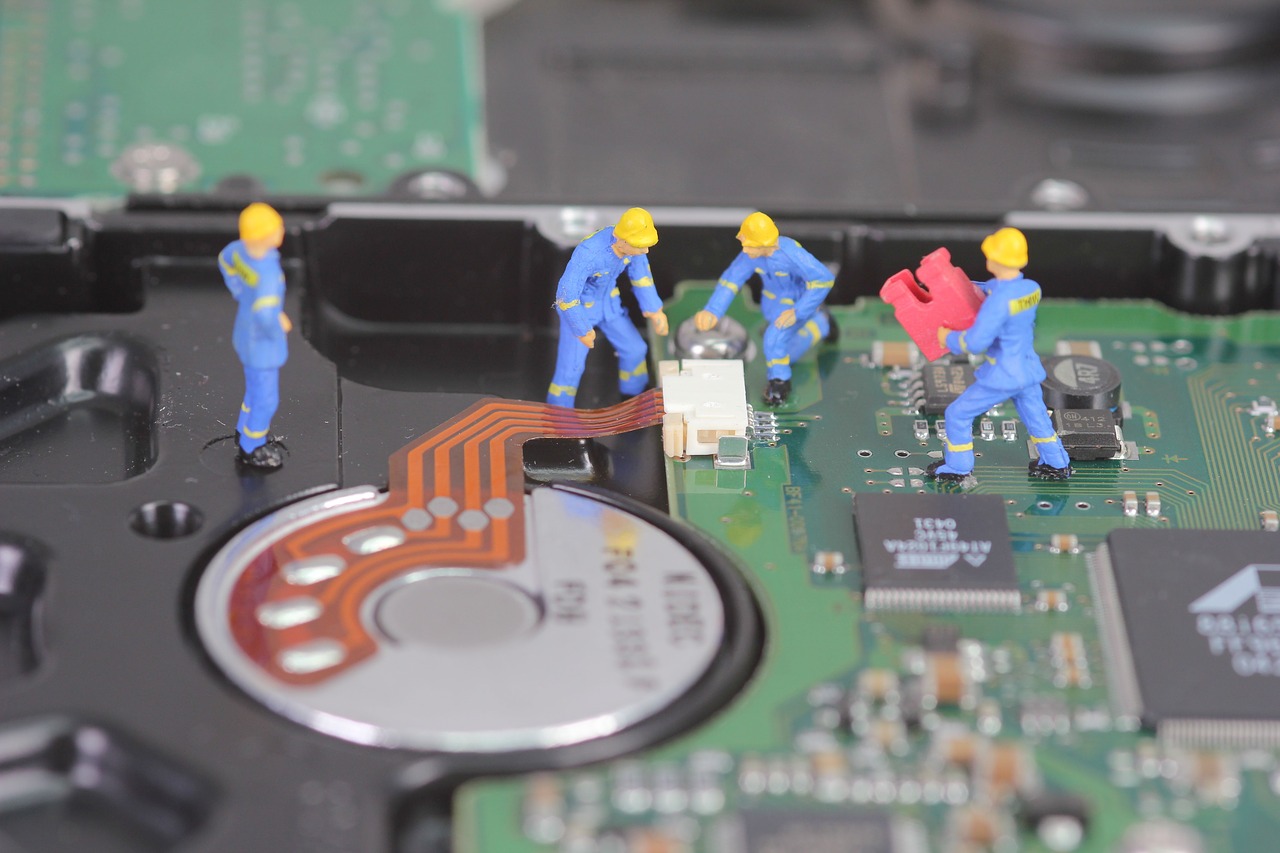
In this blog series, Sid Faber, Senior Robotics engineer, explains why Kubernetes and robotics are a great match.
Learn how to run ROS 2 on Kubernetes and set up a simple talker/listener system using a MicroK8s cluster on Ubuntu.
In the summer of 2020, the MicroK8s native installers for Windows and macOS were made generally available.
This was a big milestone for the lightweight Kubernetes distribution, making it even simpler for developers to spin up nodes and clusters on their platform of choice.
This blog outlines the consistent experience of installing MicroK8s on Linux, Windows and macOS. You will also learn about Multipass, the simple VM utility, used under the hood in the Windows and macOS installers.

This blog explains how to create a hybrid Kubernetes cluster with MicroK8s, running Windows containers for specific workloads.
Learn about the K8s components required to host Windows-native workloads as well as the networking and support options for Windows worker nodes.

